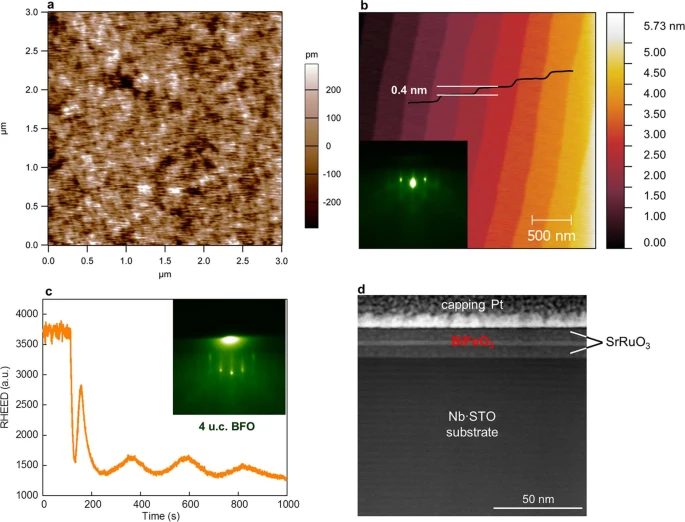Science Daily February 13, 2023
In nanoelectronics charged domain walls, especially in ferroelectric structures, serve as an active element. The ability to deterministically create and manipulate charged domain walls is essential to realize their functional properties in electronic devices. An international team of researchers (China, Singapore, USA – University of Nebraska, South Dakota School of Mines and Technology) developed and demonstrated a strategy for the controllable creation and manipulation of in-plane charged domain walls in BiFeO3 ferroelectric films a few nanometres thick. By using an in-situ biasing technique within a scanning transmission electron microscope, an unconventional layer-by-layer switching mechanism was detected in which ferroelectric domain growth occurred in the direction parallel to an applied electric field. They showed that oxygen vacancies accumulating at the charged domain walls are responsible for the domain-wall stability and motion. Voltage control of the in-plane domain-wall position within a BiFeO3 film gave rise to multiple non-volatile resistance states, demonstrating the key functional property of being a memristor a few unit cells thick. According to the researchers their results promote a better understanding of ferroelectric switching behaviour and provide a new strategy for creating unit-cell-scale devices…read more. TECHNICAL ARTICLE

Growth of BFO ultrathin films…. Credit: Nature volume 613, pages656–661 (2023)